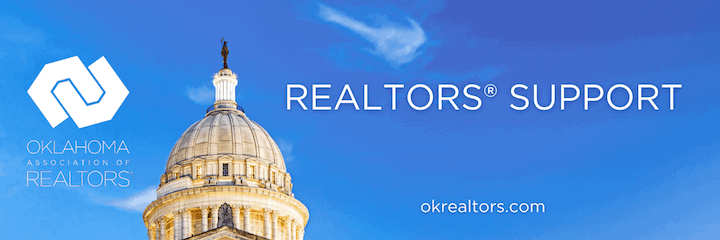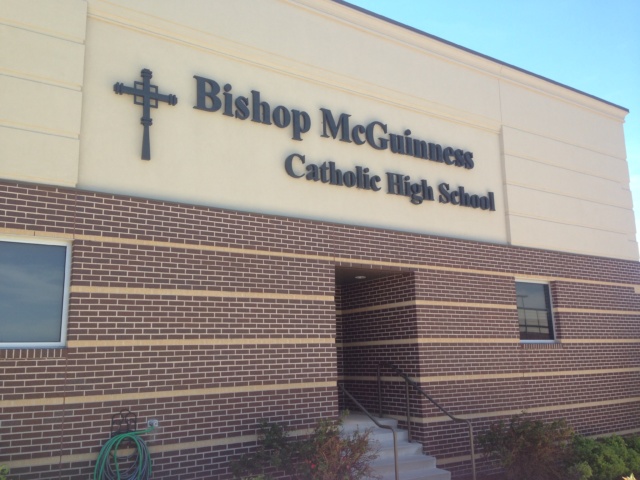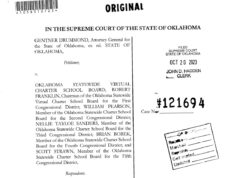
For a school whose mission statement touts its dedication to “educating and developing the whole person” as well as “providing a moral, ethical and Christ-centered compass for life,” personal experience tells me OKC’s Bishop McGuinness Catholic High School has been largely unsuccessful.
In the six years I spent at Bishop McGuinness Catholic High School and as an alumna, three major racial controversies occurred, but it was the school’s response in each instance that truly shocked me.
Like most institutions, Bishop McGuinness exhibits a deep concern for its public image. Naturally, a fall in donations or decreased student enrollment could have followed the controversies after they gained media attention, but the school’s concern with its public image dictated its responses to such public relations crises. The administration often deflects the blame to outside individuals to escape the contention largely unscathed.
But doing this only perpetuates a systemic problem that I believe has existed at McGuinness over the past several years.
Students criticize cardinal on immigration
The Lost Ogle caught wind of the first controversy in 2012. A cardinal had come to speak to the student body about the importance of compassionately helping immigrants and refugees into the country. The cardinal also explained how, as Catholics, tolerance toward immigrants, regardless of legal status, was a necessary aspect of the Catholic social teaching.
Many of the students found this viewpoint in stark contrast to perspectives they had learned from their parents (who often formed their political opinions based on information from Bill O’Reilly and Alex Jones). Rude comments toward the cardinal followed by substantial applause eventually ensued, and it was incredibly uncomfortable.
Yet there was no response from the school administration immediately after the incident. It wasn’t until a few weeks later that the student population was eventually scolded during an “emergency all-school assembly” after the TLO post had garnered enough attention. Most of the assembly was not even centered on reprimanding students for their actions. Instead, officials urged students not to discuss these sorts of situations with media outlets. School administration would field any student input related to the cardinal’s visit.
SAE fallout prompts image consciousness
Bad press about McGuinness did not stop there. By the end of my senior year, a situation that barely involved the school managed to gain traction because of student response. In March 2015, the infamous University of Oklahoma Sigma Alpha Epsilon video was exposed, stirring up national controversy regarding racist words chanted by fraternity members on a bus.
When I saw the video, I was disgusted to think these sorts of racist comments were that prevalent in 2015. I had assumed my emotions of sadness and disappointment were fairly universal. Upon returning to school the next morning, however, I learned from many classmates that, rather than being upset at the young men for partaking in the group chant, many were concerned for them, even including them in our daily “prayer intentions.” My classmates were worried about the repercussions the men could face on OU’s campus that day. Stunningly, the majority went on to defend and attempt to justify the actions of those men through peer pressure and group mentality.
I wish I could articulate the disappointment I felt at that moment when I realized the true level of ignorance that existed within the walls of that school. I later learned that many McGuinness graduates had actually been members of SAE, which is why so many of my peers came to the support of those in the video. At the time, there was discussion across the school of different articles being written about McGuinness’ connection to the SAE controversy, but I don’t believe any ever came to fruition (unless you count this).
A few days later, we had another school-wide assembly to address the controversy and potential media backlash. Of course, the message “don’t be racist” was outweighed by the lesson that everything is “public and permanent,” essentially furthering the image-centric ideology that the school uses as its own administrative model.
Yearbook’s ‘Hitler’ quote makes headlines
So it was no surprise to me when another racial controversy within the walls of Bishop McGuinness made its way to local news, this one regarding an “Adolf Hitler” quote being printed in the yearbook. (I put “Adolf Hitler” in quotations because the quote was not actually by Hitler but instead Abdul Kalam, the former president of India).
Before the shaming begins, it is also important to note that the student didn’t even put Adolf Hitler as the author of the quote for submission. Instead, they wrote several letters as initials, and yearbook editors wrote in the name. The school yearbook goes through intense scrutiny prior to publication, so I have a hard time believing that the quote was so easily overlooked. Regardless, the initial intention to reference Hitler or Kalum is not the ultimate point. Rather, the school’s response to the incident bears examination.
The response of McGuinness to this situation is also strikingly similar to the precedent that had been set in the prior two situations as well. The school only chose to make a statement when the school’s “Catholic” image could be questioned on a larger scale.
Public relations bubble will inevitably pop
Teenagers are stupid and regularly do stupid things. While that maxim doesn’t excuse the actions of students who found their way into the spotlight, it is important to recognize a pattern that exists. Also, understand that the words and actions of a school’s students reflect the morals of the school at large. The image-centric paradigm Bishop McGuinness seems to cling to only conceals internal problems until people lose interest and move on to the next big controversy.
McGuinness routinely has exhibited an ability to mask internal problems by creating a thin veil that claims to maintain Catholic virtues of love, kindness and compassion. If the school wants to prevent further controversy, there needs to be some top-down reform to address issues deeply rooted within the entire school structure.
Inevitably, this bubble is going to pop. Even the micro-aggressions that occur under the noses of administrators every day — problems that will never find their way onto NonDoc, The Lost Ogle or any other publication — will eventually build up and destroy the image the school attempts to create and maintain.
Ultimately, private schools are businesses. No matter what efforts are made to focus on the goals of education and student care, money will always be the most important factor.
And Bishop McGuinness exemplifies this all too well.
As an alumna, I want the best for my high school and hope changes can be made to reflect Catholic virtues — both inside and out.






















